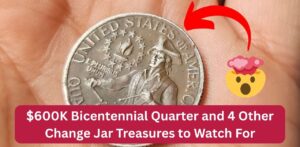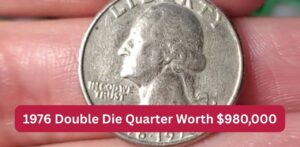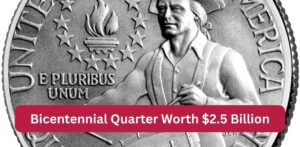Most people think of a $5 bill as simple spending money—but in rare cases, it could be worth thousands. One of the most sought-after currency errors in the U.S. is the 1995 $5 bill with an inverted Treasury seal. This unusual printing mistake has made headlines for its scarcity and high auction prices, and yes—it could still be hiding in your wallet.
What Makes the Inverted Seal So Valuable?
An inverted seal occurs when the green Department of the Treasury seal on the right side of the bill is printed upside down or noticeably rotated. This rare error typically happens when sheets are misaligned before final printing. While modern quality control at the Bureau of Engraving and Printing is strict, some mistakes slip through—creating valuable collector’s items.
The 1995 $5 bill inverted seal error is especially prized due to its rarity and visual impact. Depending on the bill’s condition, these notes can sell for $2,000 or more at auction.
How to Spot a 1995 $5 Bill With Inverted Seal
If you think you may have one of these rare bills, here’s exactly what to check:
1. Series Date
Look to the lower left of Abraham Lincoln’s portrait. The bill must say “Series 1995”. Other series are not known to have this specific error.
2. Treasury Seal Orientation
Inspect the green seal on the right-hand side. It should be perfectly upright. If it appears tilted, rotated, or fully upside down, it may be a true inverted seal error.
3. Authenticity
Compare your note to a normal $5 bill to ensure the seal isn’t altered after printing. True error notes are the result of printing mistakes, not damage or tampering. Fake errors often show signs of manual manipulation.
Condition Affects Value
Even if your bill is authentic, its condition plays a major role in how much it’s worth. Collectors and grading services use a scale that ranges from “Good” to “Crisp Uncirculated.”
| Grade | Estimated Value |
|---|---|
| Good to Very Fine | $100 – $500 |
| Extremely Fine | $600 – $1,200 |
| Uncirculated | $1,500 – $2,500+ |
To get top dollar, your bill should have no folds, tears, stains, or creases.
Where These Bills Have Been Discovered
These valuable error bills don’t just sit in collector’s vaults—they’ve been found in the most ordinary places. People have discovered them in ATM withdrawals, gas stations, and even fast-food change. One example sold for over $1,900 at auction in 2021, simply because the finder took the time to look closer.
What to Do If You Find One
If you think you’ve found a 1995 $5 inverted seal bill, follow these steps:
- Don’t spend it — its collector value far exceeds its face value.
- Take clear photos — this helps with initial identification.
- Have it authenticated — use trusted grading services like PMG (Paper Money Guaranty) or PCGS Currency.
- Sell through the right channels — consider listing it with a reputable dealer or an auction house that specializes in U.S. currency.
Why Error Notes Are Gaining Popularity
The rising interest in currency errors and collectible bills is being fueled by viral stories, online forums, and YouTube coin hunting channels. Unlike rare coins, which often require detailed knowledge, paper currency errors are easier to spot and understand.
With more Americans using digital wallets and cards, paper currency is becoming less common—which only boosts the scarcity and interest in physical notes with rare defects.
Final Thoughts: A Hidden Gem Could Be in Your Wallet
The story of the 1995 $5 inverted seal is a perfect reminder that not all cash is created equal. These rare error notes are part art, part history, and all value. The next time you receive a $5 bill in change, give it a second look—it might be worth thousands.
FAQs
Q1: Is the 1995 $5 bill with inverted seal still in circulation?
A: Yes, although rare, some have been found in everyday transactions as recently as the last few years.
Q2: How can I verify that the seal is truly inverted?
A: Compare it with a standard $5 bill. If the green seal on the right is rotated or upside down, you may have an error note. Professional authentication is recommended.
Q3: Can I spend an inverted seal bill at a store?
A: Yes, it’s legal tender. However, spending it would be a loss if it’s a genuine collector’s piece worth far more.
Q4: What’s the best way to sell a rare error bill?
A: Use a certified currency grading service, then connect with a reputable auction house or collector marketplace to get the highest value.



